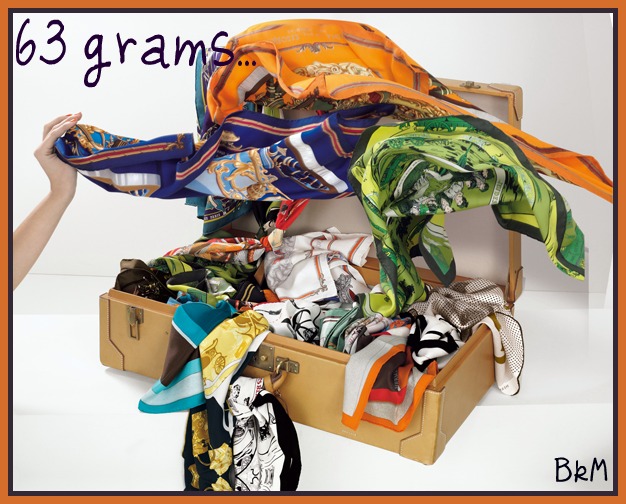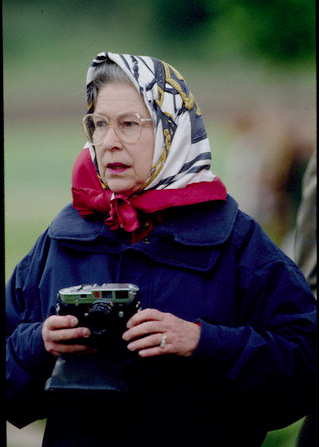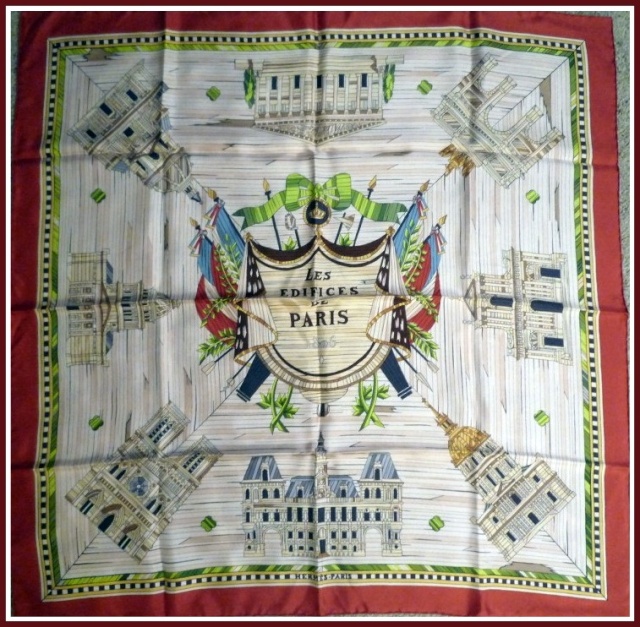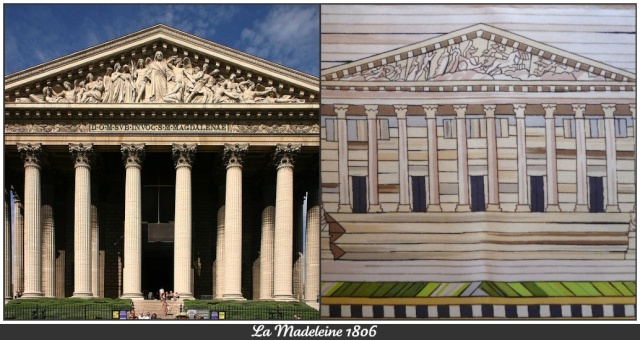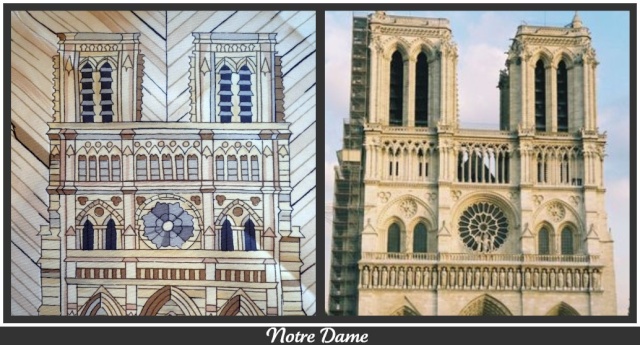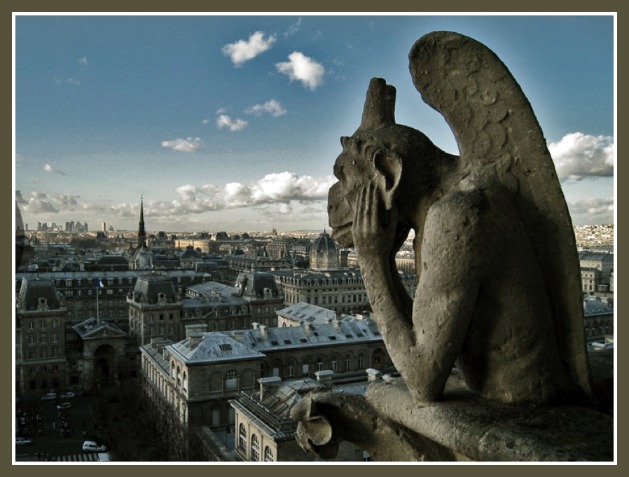Tuesday, January 4, 2011
HUGO GRYGKAR I Brides de Gala 1957
BRIDES DE GALA:
Hugo Grygkar
First issued: 1957
Reissues: Several from its first issue, around 70 different recolorations.
Catalogued: 6D
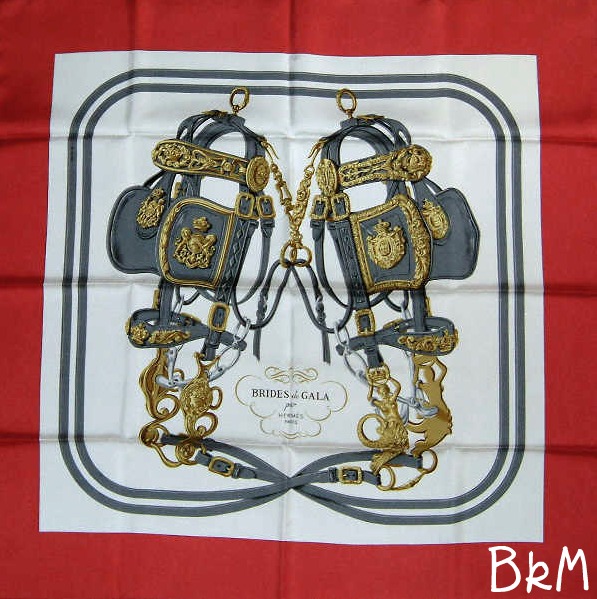
This is the best seller Hermès scarf ever and also the most faked one. It's been produced in many different versions: Carrè 90, silk jersey, cashmere 140, mousseline 140, dip dye 140, twily, pointu, gavroche, etc.
Se trata del pañuelo Hermès más vendido de todos los tiempos y también del más copiado.
A lo largo de los años se ha producido en diferentes versiones: Carré 90, Carré fluido (jersey de seda), Cashmere GM 140, Mousseline 140, Carrè 140 dip dye, twilly, pointu, gavroche, etc.
Estas son las fotos de algunas versiones:
Twill silk carré:
Carré twill de seda 90 cm:
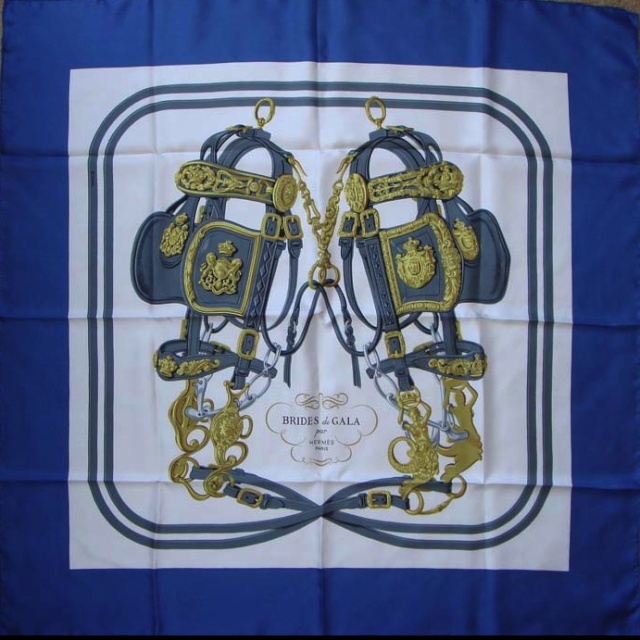
Silk jersey:

Brides de Gala Dip Dye (photo credit: Hermès.com)
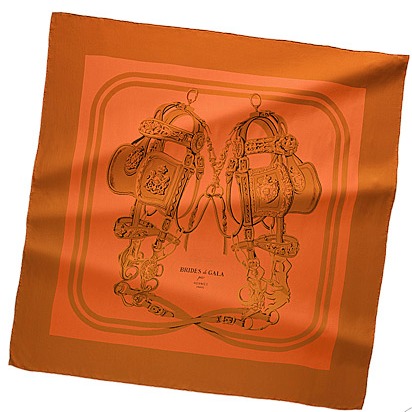
Brides de Gala dip dye Collection 2010, size 140. It's a dip dye version, an innovative technique and the result of an artisanal procedure, the carré is immersed in a dye bath that covers it with a colour filter and gives it the velvety feel of washed silk.
Its aged, patinated appearance and irregularities in colour are the expression of its charm and unique identity. Unbelievable as it may be, with this carré, Hermès embraces imperfections!
Brides de Gala Colección 2010, tamaño 140 cm. Es una versión dip dye/surtinte, una innovación técnica y como resultado de un proceso artesanal, se sumerge en un baño de tinte que lo cubre de un filtro de color y le proporciona el tacto aterciopelado de la seda lavada.
Tanto su aspecto envejecido y patinado como sus irregularidades de colores constituyen la expresión de su encanto y de su identidad., una nueva técnica realizada por Hermès que consiste en sumergir el carrè en un baño de tinte, así se consiguen colores de aspecto envejecido y la seda tiene una pátina aterciopelada:
AW 2010 collection: (Photo credit: Hermès)
Colección otoño invierno 2010:

Dip dye scarves are a wink from Hermès to the youngest people, the brand presents this new proposal as the perfect match with jeans and casual clothes in very alternative looks:
Los pañuelos dip dye son un guiño de Hermès a la gente más joven, la marca presenta su nueva propuesta como la perfecta combinación con jeans y ropa casual en looks muy alternativos:
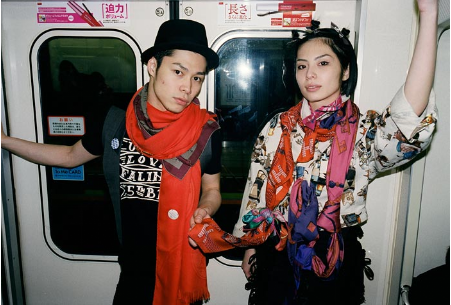
Being one of the most distinctive Hermès designs, it's understandable that the brand chose it for one of its most magnificent, impressive and expensive products, "Shiny Brides", in hand embroidered silk mousseline, collection SS2009:
Siendo uno de los diseños más distintivos de la marca, es comprensible que Hermès lo eligiese para uno de sus modelos más suntuosos e
impresionantes por su rareza y su elevado precio: "Shiny Brides", en mouselina de seda bordada (campaña primavera/verano 2009):
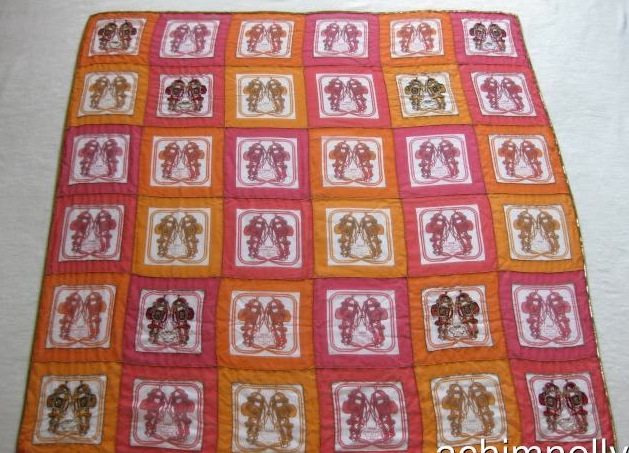

Brides de Gala is one of the absolute icons of the French brand. Recently, there have come across some new versions that give a new meaning to such classic design, like the version in the exclusive collection for Colette Paris:
Brides de Gala is uno de los iconos absolutos de la marca francesa. Recientemente han aparecido algunas versiones nuevas que dan un nuevo significado al clásico diseño, como la versión para la exclusiva colección para Colette Paris:
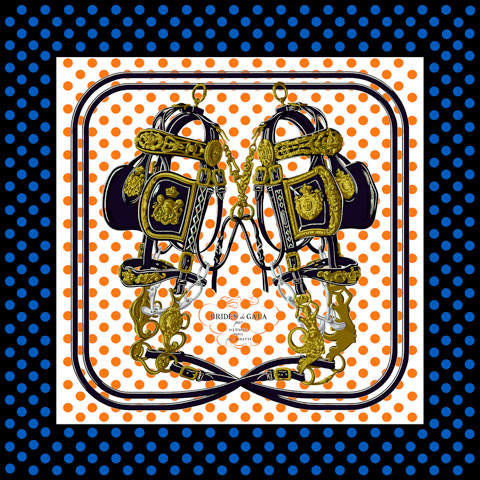
Even more recently, in the last SS2011 collection, there are new versions of Brides de Gala:
Aún más recientemente, en la colección primavera verano 2011 hay nuevas versiones de Brides de Gala:
Brides de Gala en Finesse by Florence Manlik in silk twill (Photo credit Hermès.com):
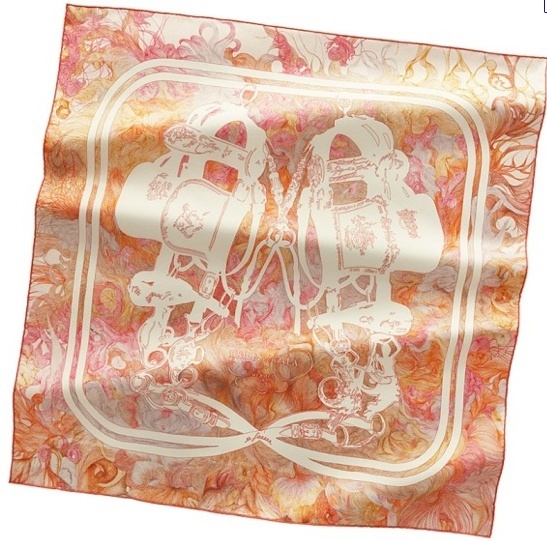
This is the Scarf story for this design:
Brides de Gala Bayadere in jersey (Photo credit: Hermès.com):
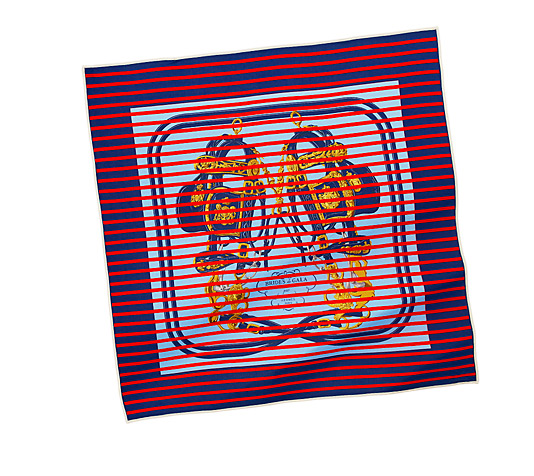
To finish up this review, let me post a picture of an illustrious collector of Hermès scarves, HM the Queen Elizabeth II of England, wearing a classic Brides de Gala with her incomparable style:
Para terminar he querido subir la foto de una ilustre coleccionista de pañuelos Hermès, HM la Reina Isabel II de Inglaterra, luciendo un clásico Brides de Galacon su inconfundible estilo:
Hugo Grygkar
First issued: 1957
Reissues: Several from its first issue, around 70 different recolorations.
Catalogued: 6D

This is the best seller Hermès scarf ever and also the most faked one. It's been produced in many different versions: Carrè 90, silk jersey, cashmere 140, mousseline 140, dip dye 140, twily, pointu, gavroche, etc.
Se trata del pañuelo Hermès más vendido de todos los tiempos y también del más copiado.
A lo largo de los años se ha producido en diferentes versiones: Carré 90, Carré fluido (jersey de seda), Cashmere GM 140, Mousseline 140, Carrè 140 dip dye, twilly, pointu, gavroche, etc.
Estas son las fotos de algunas versiones:
Twill silk carré:
Carré twill de seda 90 cm:

Silk jersey:

Brides de Gala Dip Dye (photo credit: Hermès.com)

Brides de Gala dip dye Collection 2010, size 140. It's a dip dye version, an innovative technique and the result of an artisanal procedure, the carré is immersed in a dye bath that covers it with a colour filter and gives it the velvety feel of washed silk.
Its aged, patinated appearance and irregularities in colour are the expression of its charm and unique identity. Unbelievable as it may be, with this carré, Hermès embraces imperfections!
Brides de Gala Colección 2010, tamaño 140 cm. Es una versión dip dye/surtinte, una innovación técnica y como resultado de un proceso artesanal, se sumerge en un baño de tinte que lo cubre de un filtro de color y le proporciona el tacto aterciopelado de la seda lavada.
Tanto su aspecto envejecido y patinado como sus irregularidades de colores constituyen la expresión de su encanto y de su identidad., una nueva técnica realizada por Hermès que consiste en sumergir el carrè en un baño de tinte, así se consiguen colores de aspecto envejecido y la seda tiene una pátina aterciopelada:
AW 2010 collection: (Photo credit: Hermès)
Colección otoño invierno 2010:

Dip dye scarves are a wink from Hermès to the youngest people, the brand presents this new proposal as the perfect match with jeans and casual clothes in very alternative looks:
Los pañuelos dip dye son un guiño de Hermès a la gente más joven, la marca presenta su nueva propuesta como la perfecta combinación con jeans y ropa casual en looks muy alternativos:

Being one of the most distinctive Hermès designs, it's understandable that the brand chose it for one of its most magnificent, impressive and expensive products, "Shiny Brides", in hand embroidered silk mousseline, collection SS2009:
Siendo uno de los diseños más distintivos de la marca, es comprensible que Hermès lo eligiese para uno de sus modelos más suntuosos e
impresionantes por su rareza y su elevado precio: "Shiny Brides", en mouselina de seda bordada (campaña primavera/verano 2009):


Brides de Gala is one of the absolute icons of the French brand. Recently, there have come across some new versions that give a new meaning to such classic design, like the version in the exclusive collection for Colette Paris:
Brides de Gala is uno de los iconos absolutos de la marca francesa. Recientemente han aparecido algunas versiones nuevas que dan un nuevo significado al clásico diseño, como la versión para la exclusiva colección para Colette Paris:

Even more recently, in the last SS2011 collection, there are new versions of Brides de Gala:
Aún más recientemente, en la colección primavera verano 2011 hay nuevas versiones de Brides de Gala:
Brides de Gala en Finesse by Florence Manlik in silk twill (Photo credit Hermès.com):

This is the Scarf story for this design:
Brides de Gala Bayadere in jersey (Photo credit: Hermès.com):

To finish up this review, let me post a picture of an illustrious collector of Hermès scarves, HM the Queen Elizabeth II of England, wearing a classic Brides de Gala with her incomparable style:
Para terminar he querido subir la foto de una ilustre coleccionista de pañuelos Hermès, HM la Reina Isabel II de Inglaterra, luciendo un clásico Brides de Galacon su inconfundible estilo:
